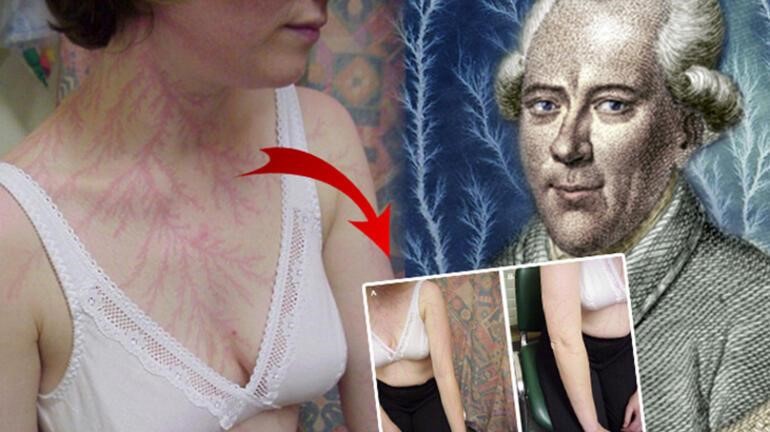
Nail fungus, known as a common skin issue, is an infection of the nails and nail beds. It is particularly prevalent in humid and warm climates, such as Antalya and similar regions. In this comprehensive guide, we will delve into everything related to Antalya nail fungus, from treatment methods to symptoms and prevention strategies.
Table of Contents
- What Is Nail Fungus?
- Symptoms of Nail Fungus
- Causes of Fungus
- Diagnosing Nail Fungus in Antalya
- Types of Nail Fungus Treatments
- Ways to Prevent Nail Fungus
- Expert Advice for Nail Fungus
- Frequently Asked Questions
What Is Nail Fungus?
Nail fungus is a skin problem characterized by an infection of the nails or nail beds. This infection is often triggered by fungi known as dermatophytes. Nail fungus can manifest with symptoms such as changes in nail color, thickening, brittleness, and deformities in the nails. It can also lead to complaints like a foul odor, itching, and pain beneath the nail. Nail fungus tends to spread more rapidly in humid and warm environments. Therefore, nail fungus infections are more common in regions with hot climates, like Antalya. If left untreated, a nail fungus infection can progress and lead to more severe problems.
Symptoms of Nail Fungus
The symptoms of nail fungus are typically manifested as changes in the nails. These symptoms may include:
-
Color Changes: A nail fungus infection can lead to changes in nail color, resulting in white, yellow, or brown spots on the nails.
-
Thickening: Fungal infections can cause nails to thicken and become rough or uneven on the surface.
-
Deformities: As the fungal infection advances, it can result in deformities in the shape of the nails. Nail edges may become jagged or distorted.
-
Brittleness: Fungal infections weaken the structure of the nails, making them prone to breaking or splitting.
-
Pain and Discomfort: A nail fungus infection can lead to inflammation in the nail bed, causing pain and discomfort.
-
Odor: An infected nail may produce a foul odor.
-
Accumulation of Material Under the Nail: As the fungal infection progresses, accumulated debris from the infected nail and waste products produced by the fungus can become trapped beneath the nail.
-
Shoe Discomfort: Thickened or deformed nails can cause discomfort when wearing shoes.
If you notice any of these symptoms, it is advisable to seek early diagnosis and treatment. Early diagnosis and treatment can help prevent the progression of a nail fungus infection.
Causes of Nail Fungus
There are various causes of nail fungus. It is more commonly observed in environments with high humidity and warmth, where fungi thrive. Here are the primary factors contributing to the spread of nail fungus:
-
Dermatophyte Fungi: Dermatophyte fungi are the most common cause of nail fungus. These fungi can easily infect and spread within the nail structure.
-
Tight Footwear: Wearing tight and closed shoes can increase moisture and sweating in the feet, creating a favorable environment for fungal growth.
-
Humid Environments: Fungi tend to proliferate more rapidly in humid environments. Prolonged exposure to places such as showers, pools, and saunas can increase the risk of nail fungus.
-
Poor Foot Hygiene: Neglecting regular foot cleaning and drying can provide a breeding ground for fungi to settle and spread.
-
Weakened Immune System: A weakened immune system can reduce the body's resistance to fungal infections and increase the risk of nail fungus.
-
Nail Injuries: Injuries or microtraumas to the nails can create entry points for fungi.
-
Personal Contact and Shared Items: Contact with an individual with a fungal infection or the sharing of items like shoes or socks can increase the risk of infection.
-
Chronic Illnesses: Chronic illnesses such as diabetes can increase the risk of nail fungus.
To prevent nail fungus infections, it is essential to practice good hygiene, choose appropriate footwear, and avoid prolonged exposure to humid environments.
Diagnosing Nail Fungus in Antalya
The diagnosis of nail fungus is typically made by a healthcare professional who examines the appearance of the nails and assesses symptoms. To establish a diagnosis, it is usually necessary to consult a dermatologist or a specialist doctor. Here are some methods commonly used in diagnosing nail fungus:
-
Visual Examination: The doctor carefully examines the appearance of the infected nail. Nail color, thickness, shape, and other signs are evaluated.
-
Nail Sample Collection: A sample may be taken from under or along the edge of the nail. This sample is then examined under a microscope to determine the presence of a fungal infection and identify its type.
-
Culture Test: Nail samples can be sent to a laboratory for a culture test. This test can help identify which type of fungus is causing the infection.
-
Wood's Lamp Test: The doctor may assess the infected nail under a special ultraviolet light called a Wood's lamp. This test can aid in diagnosing the presence of a fungal infection.
Nail fungus diagnosis should always be made by a specialist. Attempting to self-diagnose can lead to incorrect treatment and delayed care. If you notice symptoms of nail fungus, it is essential to seek guidance from a healthcare professional for appropriate treatment.
Types of Nail Fungus Treatments
The treatment of nail fungus can involve different methods depending on the severity and type of infection. The appropriate treatment method recommended by a dermatologist or specialist doctor should be selected. Here are some common types of nail fungus treatments:
-
Topical Treatments: Topical (surface) treatments are used in mild to moderate nail fungus cases. These treatments typically involve the application of creams, lotions, or nail polishes directly to the affected nail.
-
Oral Medications: In more severe cases, the doctor may recommend oral antifungal medications. These medications target the fungus from within the body and can aid in nail recovery.
-
Laser Therapy: Laser therapy is an innovative approach to treating nail fungus. Laser light can affect fungal cells, helping to control the infection.
-
Surgery: In rare instances where other treatment methods are ineffective, a doctor may recommend a surgical procedure to remove the infected nail.
-
Natural Remedies: Some individuals prefer natural methods to treat nail fungus. If approved by your doctor, natural treatments like essential oils, apple cider vinegar, or sea salt baths can be used.
Before starting treatment, it is crucial to consult a healthcare professional. Trying self-treatment methods can worsen the infection. The right treatment option can effectively manage nail fungus.
Ways to Prevent Nail Fungus
There are essential steps to prevent nail fungus in Antalya:
-
Foot Hygiene: Regularly washing and drying your feet is the first step in preventing fungal infections.
-
Choosing Proper Footwear: Avoiding tight and closed shoes can reduce the risk of fungal spread.
-
Caution in Shared Areas: Being cautious in shared spaces like pools, saunas, and gyms can minimize the risk of infection.
-
Expert Advice for Nail Fungus
Experts offer the following advice for the treatment and prevention of nail fungus:
-
Maintain regular nail trimming and cleanliness.
-
Wash and dry your feet after pool and beach visits.
-
Keep your feet as well-ventilated as possible.
- Regularly disinfect your shoes.
Frequently Asked Questions (FAQs)
What is effective for treating nail fungus in Antalya?
For the treatment of nail fungus in Antalya, it is essential to seek help from a dermatologist. The appropriate treatment method and medications should be determined by a specialist.
What steps should be taken to prevent nail fungus in Antalya during the summer months?
To prevent nail fungus in Antalya during the summer, it is important to wear open-toed shoes or sandals and to wash and thoroughly dry your feet after swimming in pools or at the beach.
What can nail fungus affect if left untreated?
If left untreated, a nail fungus infection can lead to permanent nail deformities and discomfort.
How can I prevent the recurrence of nail fungus?
To prevent the recurrence of nail fungus, continue practicing good foot hygiene, choose appropriate footwear, and be cautious in shared areas.
Conclusion
Nail fungus is a common skin issue in Antalya, especially due to the influence of humid and warm climate conditions. In this article, we have provided a comprehensive perspective on nail fungus, covering its symptoms, treatment options, and preventive measures. By maintaining healthy foot care and taking appropriate precautions, it is possible to prevent nail fungus. Remember that seeking help from a doctor for nail fungus treatment is always the best course of action.
 English
English 









